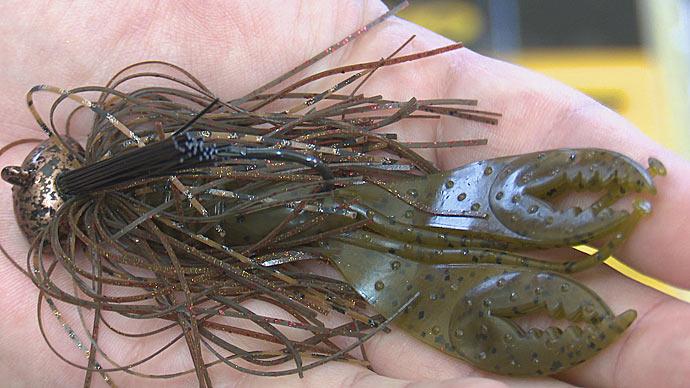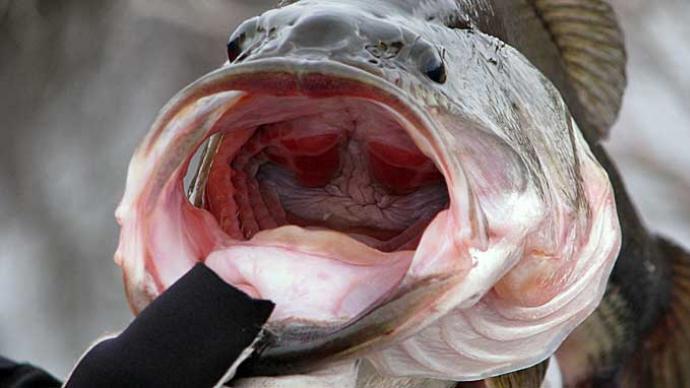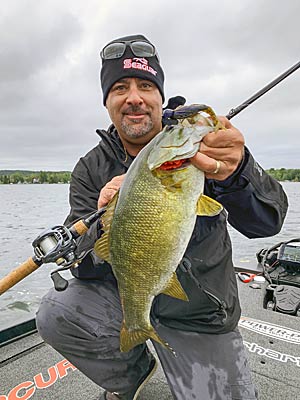
When smallmouth fishing is brought up, it conjures up the thought of deep water, light line, and finesse techniques. This is how many anglers tackle smallmouth fishing, and it works great most of the time, but brown bass can also be caught with power fishing techniques in very shallow water.
Michigan’s Mark Zona travels the country filming his popular show, Zona’s Awesome Fishing Show, and as an analyst for the Bassmaster Elite Series. He’s on the water often and says that over the past ten or so years, he has learned that big smallmouth bass are suckers for big baits in shallow water.
Zona’s Power Smallmouth
Zona agrees that smallmouth fishing is usually a finesse approach, but they can be conditioned to seeing these offerings.
“So many times, smallmouth are thought of only for finesse fishing. I think anglers limit themselves if they only think of things like tubes, Ned Rigs, and a drop-shot,” he said. “Over the past ten years, I have learned that you can rough talk smallmouth and catch them on heavy line. The best part is you will catch the biggest and baddest fish in the area.”
Since finesse rigs are standard for smallmouth fishing, Zona has learned to go against the grain, upsize his baits, and speed up how he fishes for them. “This is the polar opposite of the finesse stuff we all use, and it works because they are not used to seeing it,” Zona stated.
Bait Selection
Crankbaits, jerkbaits, spinnerbaits, swimbaits, swim jigs, and more are all excellent ways to catch big smallmouth in shallow water, but Zona’s choice is something else.
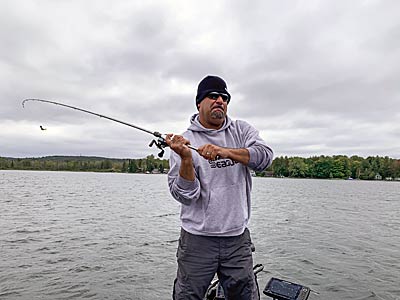
“The vibrating jig has become my go-to for shallow smallmouth for the past few years. This is not a numbers gig, you are going after big fish, and the great thing about it is that you can use a 20-pound line and have command over the fish,” he said. “So many smallmouth techniques are with light line, and the smallmouth has leverage over us. This is caveman style; it is barbaric.”
His bait is the Strike King Thunder Cricket paired with a Strike King KVD Perfect Plastic Blade Minnow. He usually keeps it simple with either a Green Pumpkin-colored bait and trailer or something with plenty of white in it.
“Hands down, the best thing about this technique is that it is a straight wind as fast as you can reel. When you are fishing four feet deep and less, the smallies only have one place to go, and that is up,” Zona said. “They jump, but with heavy line and that bladed jig, your hookup and landing percentage are exponentially better. When one hits it, torque the reel handle and start to reel. Do not give them slack; you will lose fish when they come out of the water.”
When to Head Shallow
There is no magic timeframe when fishing shallow for smallmouth shines, and Zona does it when he knows the smallmouth bass are in shallow water.

“You may catch a few smallmouths on other baits in shallow water, which is a clue that they are living in shallow water. Let them tell you they are shallow,” he said. “You can usually get more bites with other techniques, but with this approach, you will catch the biggest ones in the area.”
What to Look For
There are many places where this approach will work if smallmouth are present, but Zona has learned some similarities to where bass will congregate.
“It works best in what I call ‘broken bottom,’ where the bottom changes from sand to rock. Or from rock to grass or from grass to sand,” he said. “These transition areas are where this technique shines, and smallmouth gather in shallow water.”
While discussing the areas to apply this technique, Zona offered a real-world example of its effectiveness. “I just came back from filming a show on Lake Ontario, which is notorious for being a deep-water drop-shot lake. We were in a popular bay, and the wind was howling, and the water dirtied up,” Zona shared. “Normally, shallow and dirty water is where smallmouth anglers run as far away as they can, but we went to the back of the bay, and it was unreal how the fish bit. We couldn’t catch them on any other technique.”
The Gear
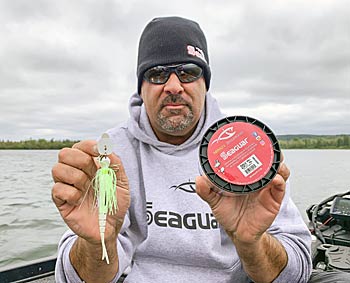
Zona's rod, reel, and line setup are vital components to how he power-fishes for shallow smallmouth.
“I like to throw it on a 7’4” Daiwa Tatula Bladed Jig rod because it is a very parabolic rod. It is crucial to have a rod with that bend when one throttles it,” he said.
Zona will pair the rod with a high-speed 8.1:1 Daiwa Tatula reel, and he spools it with 20-pound Seaguar AbrazX fluorocarbon.
“The 20-pound helps me keep the bait up higher in the water column than it would with a lighter line. I use AbrazX because most of the time, I am fishing around zebra mussels and areas with mixed in rock, and it helps to keep the line from getting nicked,” he added.
Smallmouth bass are a deep-water fish that prefers clear water, bite-sized lures, and a finesse approach. While that is true on many occasions, they are equally willing to chase a bulkier bait in shallow water when the conditions are right. Mark Zona and others have learned that power-fishing for smallmouth can lead to some of the biggest bronzebacks in the area.
BassResource may receive a portion of revenues if you make a purchase using a link above.



